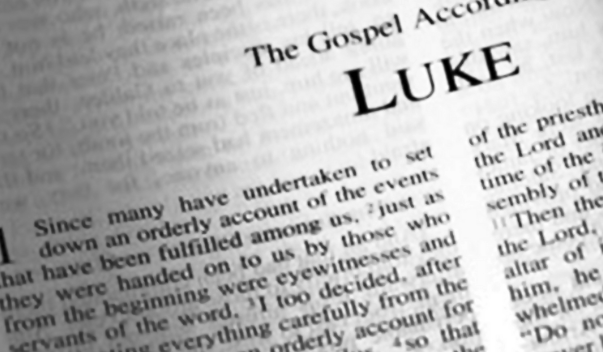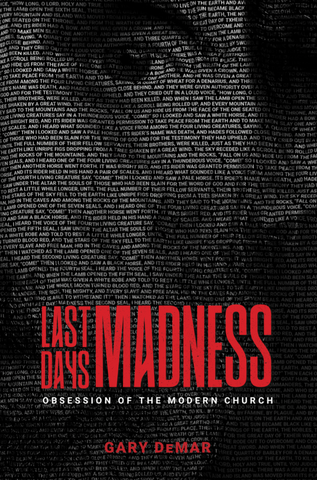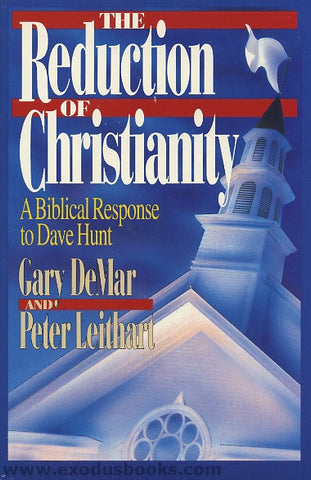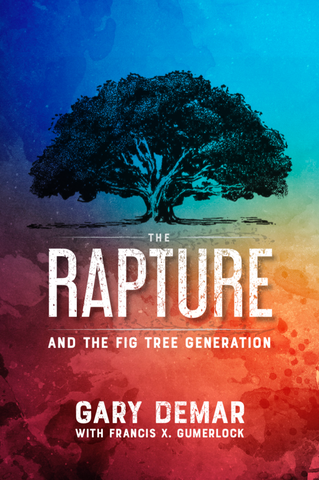
Last Sunday’s sermon (3/10/2024) at our church was from Mark 15. Verse 21 caught my attention: “They pressed into service a passer-by coming from the country, Simon of Cyrene (the father of Alexander and Rufus), to bear His cross.” Biblical skeptics call for historical proof that Jesus existed and that the NT record is authentic. Many of these critics contend that the Gospels were written very late into the first century. These same critics dismiss Jesus’ prophecy about His coming before that Apostolic generation passed away. In fact, they go so far to say that Jesus was mistaken about His coming (Matt. 24:34). If the gospels were written post-AD 70, why would the supposed inventors of the Christian religion—Matthew, Mark, Luke, and John—include a blatantly false prophecy in their accounts? It makes no sense.
Some argue that there are no records outside the NT books that authenticate the life, ministry, and work of Jesus. There are 27 historical records that make up the NT. There are no comparable historical records from that era with that much corroborating source material. Luke did a thorough investigation from eyewitnesses:
Since many have undertaken to compile an account of the things accomplished among us, just as they were handed down to us by those who from the beginning were eyewitnesses and servants of the word, it seemed fitting to me as well, having investigated everything carefully from the beginning, to write it out for you in an orderly sequence, most excellent Theophilus; so that you may know the exact truth about the things you have been taught (Luke 1:1-4)
Paul makes a similar argument based on eyewitness accounts (1 Cor. 15:3-8).
You can’t do much better than multiple eyewitnesses: “Every fact is to be confirmed by the testimony of two or three witnesses” (2 Cor. 13:1; see Num. 35:20; Deut. 17:6; 19:15; Matt. 18:16). We know about Roman history by Roman historians who wrote histories of that era. Tacitus wrote the Annals and the Histories that examine the reigns of the emperors Tiberius, Claudius, Nero, and those who reigned in the Year of the Four Emperors (AD 69). These two works span the history of the Roman Empire from the death of Augustus (AD 14) to the death of Domitian (AD 96). Tacitus was born in AD 56, and his Histories was written around AD 100-110. Suetonius wasn’t born until a year before the AD 70 destruction of Jerusalem. The letters (c. AD 61-113) of Pliny with Trajan are the earliest surviving Roman documents to refer to early Christians. These letters prove that Christianity was an early and rapidly growing force in the Roman Empire.
Josephus (c. AD 37- c.100) chronicled the Wars of the Jews. How many contemporary historical works authenticate the works of Josephus or those of Tacitus, Suetonius, Pliny, and Plutarch?
Mark’s mention of Simon of Cyrene, “the father of Alexander and Rufus,” is not an insignificant addition to the narrative when it comes to historical authenticity since it tells us something about the time and reliability of Mark’s gospel. These men were known by Mark’s intended audience! They might still have been alive when Mark penned his gospel.
The historicity of the Bible is of vital importance to Christians in that it’s linked to the growth of Christendom and the ultimate meaning of life that begins when we are brought into this world. If the Bible isn’t true, then we are, to use Walker Percy’s book title, Lost in the Cosmos. What we are and how we got here is a speculative mystery that will never be solved. It’s one of the reasons scientists send out probes throughout our galaxy and build high-powered telescopes to search for our cosmic origins. They are trying to find the meaning destroyed with their matter-only cosmos. Carl Sagan defined such a world: “The universe is all that is or ever was or ever will be.”[1] To the Saganites, our planet is nothing more than a revolving “pale blue dot” bobbing in the vacuum of space.
The question of the lack of self-knowledge of the enlightened self, Carl Sagan comes up in Percy’s two-part explanation of “the lonely self.” The first part explains the loneliness of “the autonomous self.” We sometimes experience ourselves these days as “autonomous” or on our own without any guidance in figuring out who [we] are and what we’re supposed to do. The downside of being autonomous is being alone. And the autonomous self can’t help but experience him- or herself not only as all alone in the world of other people, but all alone in the Cosmos that is indifferent to his or her singular existence. For our transhumanists, for example, the fundamental situation seems to be ME vs. the Cosmos (or the nature that is out to extinguish forever MY very being).[2]

Last Days Madness
In this authoritative book, Gary DeMar clears the haze of "end-times" fever, shedding light on the most difficult and studied prophetic passages in the Bible, including Daniel 7:13-14; 9:24-27; Matt. 16:27-28; 24-25; Thess. 2; 2 Peter 3:3-13, and clearly explaining a host of other controversial topics.
BUY NOWNot to go too far afield, but at times Christians seem lost in the cosmos or viewed as barely important interlopers in a world that belongs to pagans. Why did God bother to create the world and put us in it if this world is insignificant or the legitimate domain of kingdom rebels? Why redeem the elect and leave them here? What are we supposed to do post-redemption? Wait for some new directive? Look for the “blessed hope” (Titus 2:13)[3] in something called “the rapture of the church”?[4] (I deal with the meaning of the “blessed hope” in my book Last Days Madness.) Jay Rogers comments:
We ought to be concerned with revival among the churches and world evangelization because it is the commandment of the Lord, not because a famous Christian leader has promoted his evangelistic campaign as a “significant end-times move of God.” It is self-centered and elitist to believe that our generation alone possesses this “blessed hope” (Titus 2:13). In fact, the “blessed hope” does not refer to the Second Coming of Jesus, but to “Christ in you, the hope of glory” (Colossians 1:27). It is better to show we love God by obeying His commandments than to gear our lives toward a mad rush to the end times.[5]
Dave Hunt, who was representative of many Christians who hold to a similar rapture-oriented future, wrote the following in his article “Looking for the Blessed Hope”:
Our hope is not in taking over the world, but in being taken to heaven by our Lord, to be married to Him in glory and then to return with Him as part of the armies of heaven to rescue Israel [after what’s left of Israel after two-thirds of Jews living in Israel during the Great Tribulation are slaughtered: Zech. 13:8-9],[6] destroy His enemies and participate in the Millennial reign.[7]
The “great prophetic disappointment” of 1988 and the winding down of the Left Behind franchise do not mean that many formerly “rapture-ready”[8] Christians have abandoned a belief in the return of Christ, but it has led to a fundamental reassessment of the interpretive methodology that has been used to make repeated dogmatic arguments for an imminent end-time event. Many Bible-believing Christians who cut their teeth on the works of notable prophecy prognosticators have questioned the popular end-time paradigm to such an extent that they “are not awaiting [Jesus’] return at the Rapture”[9] but instead are focusing on John Winthrop’s “city upon the hill” metaphor adopted from his “Model of Christian Charity” (1630). They have come to realize that the version of the end times that defined the twentieth century and continues to hold sway in this new century is a prophetic anomaly that had no history prior to 1830:
Pre-Civil War Evangelical eschatology was largely postmillennial, expecting Christ to return in judgment after a millennial reign of one thousand years. Post-Civil War Evangelical eschatology was dominated by a new doctrine of premillennialism. This view expected Christ to return before the millennium to take the saints out this world in an event called the “rapture.”[10]

The Reduction of Christianity
A number of valiant defenders of historical Biblical orthodoxy have risen to the challenge of unbelief. Unfortunately, while ably sounding the alarms and capably rousing the troops, some have reduced the breadth and depth and power of the Faith once for all delivered to the saints. Unwittingly, they have offered the Church a shrunken and truncated version of the Gospel. But we don't have to accept reduction in order to avoid seduction. We can contend for the Faith without condensing or abbreviating it.
BUY NOWAfter the Civil war, the optimistic worldview espoused by the earlier civilization builders “was replaced by an eschatology that looked for the return of Christ to rescue the ‘saints’ out of this world. Premillennial teaching implied that the world was in such bad shape that it would only get worse until the return of Christ. Some even argued that efforts to ameliorate social conditions would merely postpone the ‘blessed hope’ of Christ’s return by delaying the process of degeneration.”[11]
Christians who are rethinking the sensationalism of contemporary apocalyptic rhetoric have come to realize that America would never have been founded if today’s rapture version of eschatology had been prevalent in the seventeenth century. Where there had been an emphasis on “the propagation and advance of the gospel of the kingdom of Christ,”
[t]he vision was now one of rescue from a fallen world. Just as Jesus was expected momentarily on the clouds to rapture his saints, so the slum worker established missions to rescue sinners out of the world to be among those to meet the Lord in the air. Evangelical effort that had once provided the impulse and troops for reform rallies was rechanneled into exegetical speculation about the timing of Christ’s return and into maintenance of the expanding prophecy conferences.
The extent to which this shift in eschatology was felt throughout Evangelical life and thought is difficult to overestimate. One of the most striking contrasts between pre-Civil War revivalists and those after the war is that the former founded liberal arts colleges while the latter established Bible schools. To the post-war premillennialist the liberal arts college involved too much affirmation of the cultural values of this world and took time away from the crucial task of getting minimal knowledge of the Bible before rushing into the inner cities or the mission fields to father as many souls as possible before the imminent return of Christ. In the late nineteenth century the Bible school movement picked up the message of the prophecy conferences and trained a whole generation of Evangelicals in the new doctrines.[12]
Os Guinness writes that “dispensational premillennialism . . . has had unfortunate consequences on the Christian mind,” including reinforcing an already developing “anti-intellectualism” and a “general indifference to serious engagement with culture.”[13]

The Rapture and the Fig Tree Generation
For decades Christians have been enticed with the belief that they would be taken to heaven before a coming tribulation period in an event called the “rapture.” Since the national reestablishment of Israel in 1948, countless books and pamphlets have been written defending the doctrine assuring readers that it could happen at any moment. Some prophecy writers claimed the “rapture” would take place before 1988. We are far removed from that date. Where are we in God’s prophetic timetable?
BUY NOW[1] Carl Sagan, Cosmos (New York: Random House, 1980), 4.
[2] Peter Lawler, “The Lonely Self? Walker Percy vs. Carl Sagan,” The Imaginative Conservative (April 20, 2013).
[3] Take note of Colossians 1:3-6: “We give thanks to God, the Father of our Lord Jesus Christ, praying always for you, since we heard of your faith in Christ Jesus and the love which you have for all the saints; because of the hope reserved for you in heaven, of which you previously heard in the word of truth, the gospel which has come to you, just as in all the world also it is bearing fruit and increasing, even as it has been doing in you also since the day you heard it and understood the grace of God in truth.” See Gary DeMar, Last Days Madness, updated and revised ed. (Powder Springs, GA: American Vision, 2020), 223-226.
[4] “[L]ooking for the blessed hope (here, as in Gal. v. 5, Col. i. 5 al., nearly objective,—the hope, as embodying the thing hoped for), and manifestation (hope and manifestation belong together) of the glory (Chrysostom says, “He speaks here of two manifestations; the former of grace, the latter of glory.” Nothing could be more unfortunate than the rendering of the A.V., “glorious appearing,” by which the whole sense is obscured) of the great God (the Father: see below) and of our Savior Jesus Christ (as regards the sense, an exact parallel is found in Matt, xvi. 27, “The Son of man is about to come in the glory of His Father,” compared with Matt. xxv. 31, “When the Son of man shall come in His glory.” See also 1 Pet. iv. 13.” Henry Alford, The New Testament for English Readers, 3 vols.(London, 1865), 2:586.
[5] Jay Rogers, The Days of Those Kings: The Book of Daniel in Preterist Perspective (Clermont, FL: Media House International, 2017), 253.
[6] “For the premillenarian, the massacre of Jewry expedited his blessed hope. Certainly he did not rejoice over the Nazi holocaust, he just fatalistically observed it as a ‘sign of the times.’” Dwight Wilson, Armageddon Now!: The Premillenarian Response to Russia and Israel Since 1917 (Grand Rapids, MI: Baker Book House, 1977), 95.
[7] Dave Hunt, “Looking for that Blessed Hope,” Omega Letter (February 1989), 14.
[8] Todd Strandberg and Terry James, Are You Rapture Ready? Signs, Prophecies, Warnings, Threats, and Suspicions that the Endtime is Now (New York: Dutton, 2003).
[9] Jeff Sharlet, “God Blessed America: How the Christian Right is Reinventing U.S. History,” Harper’s Magazine (December 2006), 14.
[10] Donald Dayton, Discovering an Evangelical Heritage (New York: Harper & Row, 1976), 125.
[11] Dayton, Discovering an Evangelical Heritage, 126
[12] Dayton, Discovering an Evangelical Heritage, 127-128.
[13] Os Guinness, Fit Bodies, Fat Minds: Why Evangelicals Don’t Think and What to do About It (Grand Rapids, MI: Baker Books, 1994), 63-65.
https://americanvision.org/posts/putting-the-new-testament-record-to-the-test/